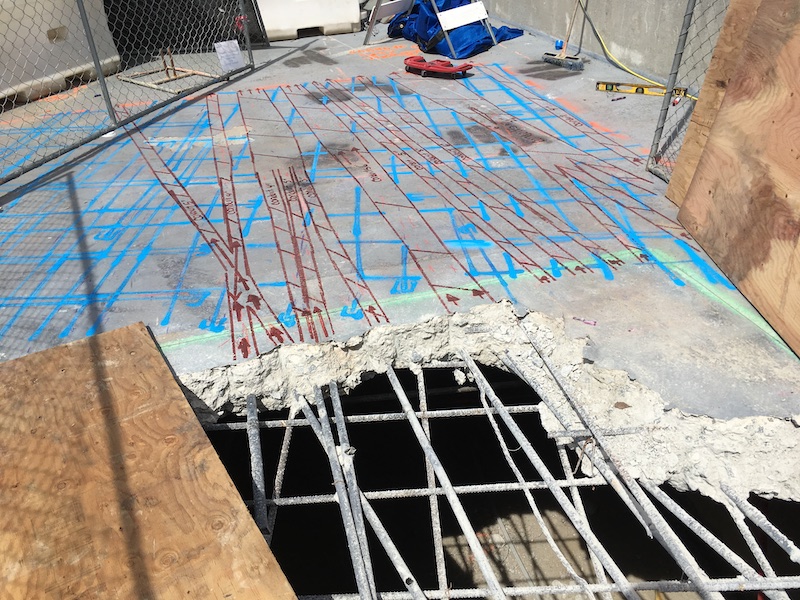Choosing the Right Concrete Scanning Tools
Choosing the Right Concrete Scanning Tools
Blog Article
Unveil the Transformative Power of Concrete Scanning in Making Best Use Of Effectiveness and Safety
Concrete scanning has actually emerged as a vital tool in the construction industry, offering unmatched advantages in boosting project performance and making certain safety and security requirements. The transformative power of concrete scanning lies in its capability to give comprehensive insights and real-time data, revolutionizing just how projects are prepared and executed.
Relevance of Concrete Scanning
Making sure the structural integrity and safety and security of construction tasks begins with the critical action of performing thorough concrete scanning. Concrete scanning is a non-destructive approach utilized to discover and map subsurface elements within concrete frameworks.
The significance of concrete scanning can not be overstated, as it plays an essential role in protecting against crashes, minimizing project hold-ups, and ensuring the long-term sturdiness of the building and construction. By recognizing potential risks before the building phase starts, home builders can implement suitable precaution and make educated choices regarding the design and implementation of the task. Furthermore, concrete scanning aids in maximizing project timelines and spending plan by staying clear of unanticipated prices and delays that may develop because of unforeseen obstructions within the concrete. Ultimately, spending in detailed concrete scanning is a positive method that enhances both effectiveness and safety and security in building projects.
Just How Concrete Scanning Functions
Concrete scanning operates as a crucial device in construction jobs by utilizing sophisticated modern technologies to find and map subsurface aspects without triggering architectural damage. Ground Penetrating Radar (GPR) and Electromagnetic Induction (EMI) are two main techniques made use of in concrete scanning. GPR works by releasing high-frequency radar pulses right into the surface area, which get better when they encounter subsurface items or voids. The time considered the signal to return suggests the deepness and place of the things. EMI, on the other hand, makes use of magnetic fields to recognize variations in product compositions, such as recognizing rebar or avenues within concrete frameworks.
Throughout the scanning process, the information collected is assessed in real-time, permitting prompt identification of potential dangers or obstacles underneath the surface area. This details help in decision-making, ensuring that construction tasks proceed securely and successfully. Furthermore, 3D imaging software can be utilized to develop topographic maps of the subsurface components, better enhancing job preparation and execution. By using these advanced modern technologies, concrete scanning considerably lowers the risk of pricey damages and injuries on construction websites.
Benefits of Concrete Scanning
One of the main benefits of concrete scanning is the capacity to discover and situate ingrained objects such as rebar, post-tension wires, and channels accurately. Concrete scanning assists in planning and making a lot more successfully, as it supplies specific info about the place and depth of structural elements.

Instance Research Studies: Concrete Scanning Success

In another case, a construction firm utilized 3D concrete scanning to analyze the problem old concrete structures in a historical structure. The in-depth scans supplied beneficial insights right into the level of deterioration and assisted focus on upkeep efforts effectively. By proactively resolving areas of concern identified with scanning, the company had the ability to expand the life expectancy of the structure and make sure owner safety and security.
These situation research studies highlight the transformative power of concrete scanning in enhancing performance, precision, and safety in building and construction jobs.
Applying Concrete Scanning in Projects
Applying advanced scanning innovations during construction tasks has actually come to be increasingly important for improving precision and safety and security. By integrating concrete scanning right into project planning and execution, building teams can identify possible threats, such as rebar or post-tension cables, hidden within concrete structures. This positive method lessens the danger of mishaps, hold-ups, and pricey rework, eventually bring about much more reliable job timelines and budgets.
To carry out concrete scanning properly, project supervisors must team up closely with skilled scanning specialists to determine one of the most suitable scanning techniques for the particular task explanation demands. Engaging scanning specialists from the beginning of a job makes it possible for the group to produce extensive scanning strategies that resolve vital areas of problem and guarantee detailed information collection.
Furthermore, integrating concrete scanning into regular task workflows can improve decision-making procedures, as real-time scan data gives immediate understandings right into the condition of concrete structures - Concrete Scanning. This data-driven method helps with educated analytical and enables teams to make modifications immediately, fostering a culture of performance and safety throughout the task lifecycle

Conclusion
Finally, concrete scanning plays an important role in boosting performance and safety in building and construction projects. By using innovative innovation to map and detect out underlying frameworks within concrete, this procedure aids to avoid pricey mistakes, guarantee structural honesty, and lessen threats on site. With the ability to uncover covert aspects and give click this site exact information, concrete scanning shows to be a beneficial device for enhancing project outcomes and optimizing overall success.
Concrete scanning is a non-destructive technique made use of to detect and map subsurface aspects within concrete structures. Additionally, concrete scanning aids in optimizing task timelines and spending plan by avoiding unforeseen costs and delays that may arise due to unpredicted blockages within the concrete. One noteworthy situation research study involves a large improvement job where concrete scanning played an essential role in making certain task success.In an additional case, a building business used 3D concrete scanning to assess the problem of aging concrete frameworks in a historical building. By incorporating concrete scanning right into job preparation and implementation, construction teams can identify prospective threats, such as rebar or post-tension cords, hidden within concrete frameworks.
Report this page